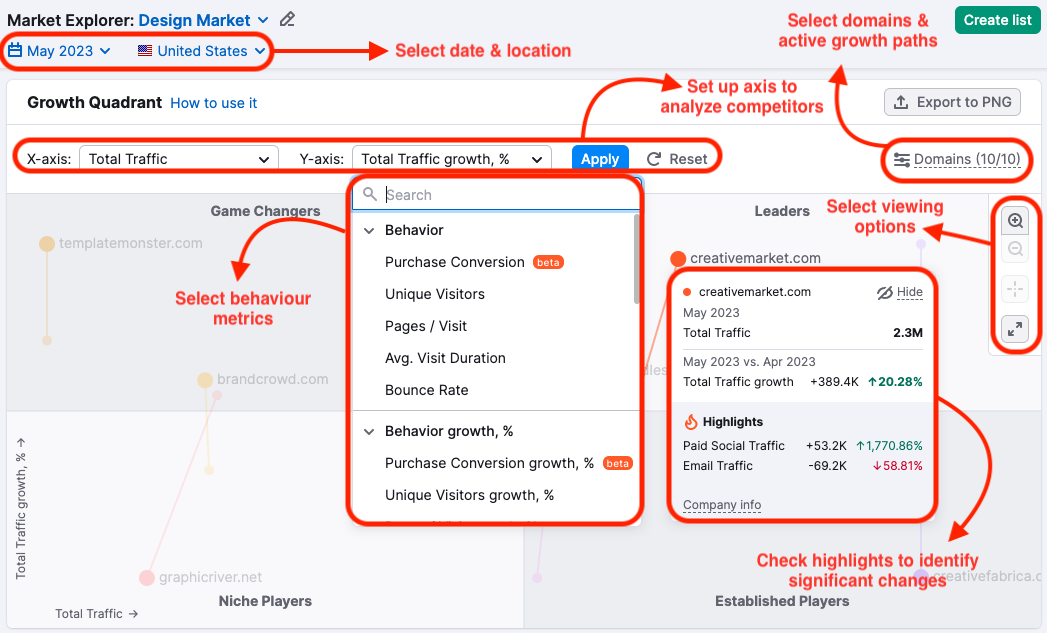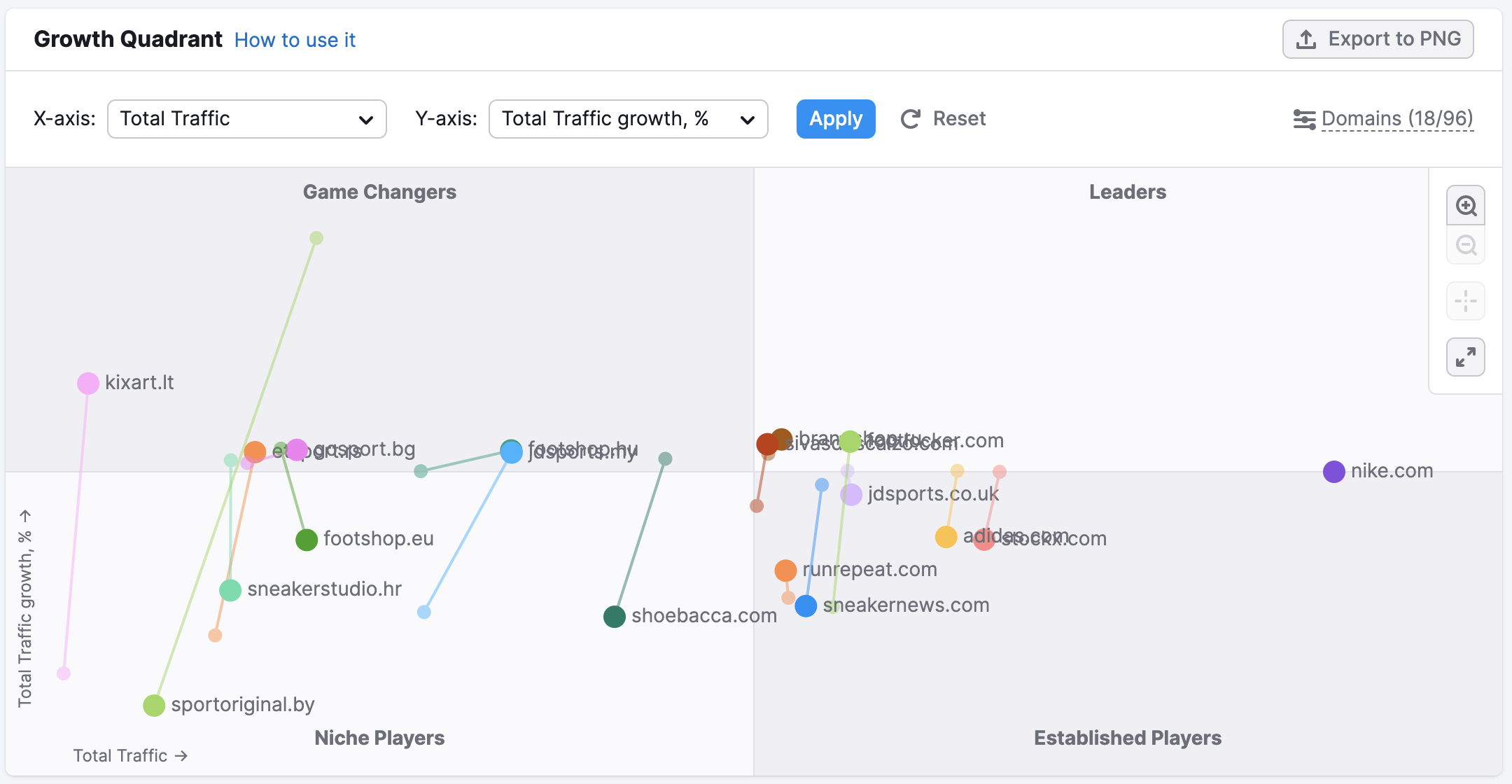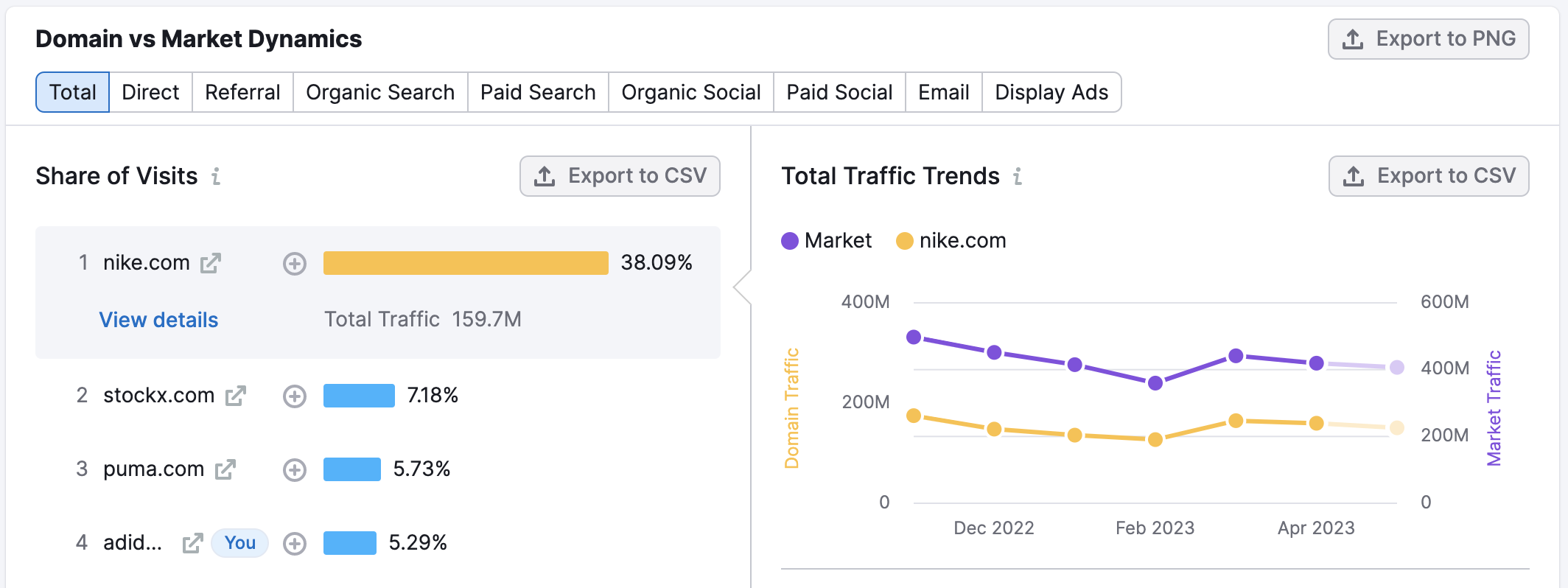Understanding how you stack up in your market is one of the key elements in competitive research. Knowing your market trends can help you dive into a new niche market, make partnerships, or conduct a thorough analysis of an entire market.
Market Explorer is the best Semrush tool for exploring market trends.
Step 1. Enter your domain into Market Explorer.
From here, Market Explorer will pull up to 100 top domain’s in your market. In this example, we used adidas.com, so you can see the market is focused on shoes and sporting goods.
The first section of the report is the Market Summary. To view trends in the market summary, select a time frame using the drop-down at the top of the report. You can select a single time period or compare two distinct time frames.
The Market Summary will then present information related to trends across that period, including changes in:
- Market size
- Market traffic
- Market traffic cost

Step 2. Utilize the Growth Quadrant to see an overview of your market landscape and uncover trends. You have the option to customize your view in a few different ways:
- By changing the time period and location
- By turning “Growth Paths” on to view market players’ growth across the selected period of time
- By setting up axes to analyze competitors from different perspectives (for example, to analyze traffic quality set axis to Total Traffic and Bounce Rate; to analyze audience engagement set axis to Total traffic and Avg. Visit Duration)
- By revealing or hiding certain players on the matrix
- By viewing in full-screen mode, or zooming in, or zooming out

Each of the quadrants has its own characteristics that are based on both traffic volume and traffic growth percentage.
Niche Players - Generally haven’t gained a large online audience, nor has their traffic been growing actively. These may be beginners or stronger businesses that have just started their expansion in a target region. Think low traffic volume + low growth rate.
Game Changers - Traffic is relatively low, but the growth rate exceeds the market average. They may become new Leaders of the market. Low traffic volume + high growth rate.
Leaders - Websites that have a significant audience and a fast pace of growth. These may be well-known companies expanding to a new region. High traffic volume + high growth rate.
Established Players - They have a big audience and a fairly steady flow of traffic that doesn’t surge month to month. High traffic volume + low growth rate.
To monitor recent trends of growth, select your desired timeframe at the top of the report. Then turn on growth paths to see the individual domains’ growth over the selected timeframe.
Observing this growth can give you insight into the entire market’s development.

You can also zoom in on certain areas of the quadrant or select certain domains to explore a particular niche within the broader market.
Step 3. Look at the total traffic trends of a market.
This is especially helpful if you are in a market that is seasonal such as swimwear or snow gear. Look at the peaks and valleys of the graph to understand where the market is heading month to month. If you are a holiday-centric business use this as a way to understand when you should ramp up marketing and content efforts and when you should pull back in order to maximize your ROI.

After following these steps, you’ll have a better understanding of how your market is trending. However, if you want to dive deeper into how you are stacking up with your competitors you should check out the following tools:
You can also check out the related workflows below this page.
